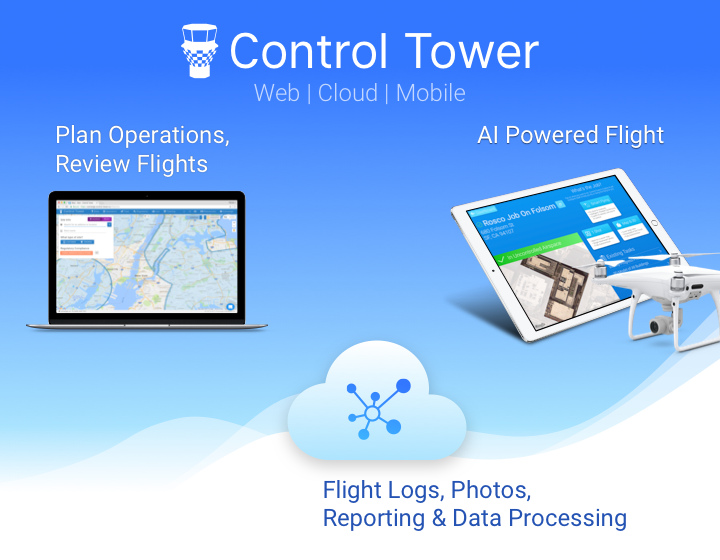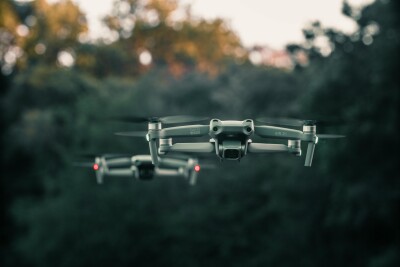On January 25th San Francisco based Converge Industries Co., a commercial drone software provider, announced it has raised $750,000 in seed funding. Initially the company had received funding from large investors such as Samsung NEXT, Techstars Ventures, Kima Ventures, and other angel investors.
This announcement is important due to the fact that Converge is focusing its R&D efforts in the development of Artificial Intelligence (AI) for drones. Any software or hardware that could accelerate the ability of UAVs to operate beyond visual line of sight (BVLOS) is one we're definitely interested in, and AI could enable this capability in an especially powerful way.Since securing the funds, Converge has been able to demonstrate deployment of its AI powered software for commercial drones with over 50 insurance adjusters at a global insurance company. The investment is also helping to develop and refine the software and grow the Converge team.We reached out to David Pitman, Co-founder and CEO of Converge for an exclusive interview about the seed funding and the development of their AI platform. Juan: Can you give us an idea of what AI applications is Converge focusing on?David: We at Converge are particularly interested in providing our customers with an AI co-pilot that would allow the remote pilot in command (RPIC) to focus on a specific task while delegating certain functions to the software. That is to say, we are developing a virtual co-pilot to assist in the successful completion of the mission.Juan: Does that means that the RPIC is flying while the AI co-pilot is performing the technical task of the mission?David: Not necessarily. We envision a time, not so distant in the future, when the tasks will be interchangeable. In other words, the AI software can perform any of the duties of the RPIC, so it is up to him or her to decide what to do and what to delegate. It is a real collaboration that would allow the human operator to safely complete the mission.Juan: One of our concerns has always been that professionals such as surveyors or farmers need to understand that while the drone is in the air, they are pilots and responsible for the flight.David: Exactly. That's why we are using artificial intelligence to turn the drone into an essential team member, working alongside humans, to transform the efficiency of operations. Drones have the ability to take on dull, dirty, and dangerous work. They can remove risk and enable companies to save valuable time and money.Juan: Can you give us an example of how this will work?David: If you’re an insurance adjuster and you’re using a drone to capture info and understand the damage that's been done, you can say, ‘Hey, this looks interesting, but we actually want to inspect this from a different angle." You can then instruct the AI to do that and the AI will figure out the best way to move the drone around to accomplish that task, to get better imagery, for example.It's especially useful when you’re looking at one corner of the building and you realize you want to swing around and look at the other corner, which can be very difficult. I’ve flown up 20 story buildings, and if you try to look at a drone that’s a foot across when it’s about 300 feet in the air, you can barely tell where the drone is. So trying to do something manually and get it in the exact right position is very hard.Juan: So the AI will learn from the previous tasks and ‘understand’ what needs to be done in difficult situations?David: Yes, that’s the idea. It's about not only collecting data, but turning it into something useful. That will allow you, as an insurance adjuster or as a roofer, to not just gather info that you had before, which might just be a few photos of the building. With this solution, you're leaping ahead to more actionable information and intelligence that you can use to drive what you’re doing as a business and do it much faster.Juan: What are the key markets you are addressing?David: With our software Control Tower, we are initially aiming at Drone Service Providers in the Insurance and Construction industries. That includes anyone performing a roof inspection, but we want to expand to other key markets soon.Juan: What’s next for Converge in the short and long term?David: In five years, the ultimate goal for Converge is to take software to a state where the regulations have matured to a point that drones can act as not just a collaborative team member with you at a particular site or location, but even as an independent team member. We want to move from today’s reality in which, because of FAA regulations, you essentially need to be in the same location as your drone, to where you can work with the drone just like you’re tasking another team member.Juan: Do you think AI will help the FAA to allow flights BVLOS?David: Not necessarily on its own, but it will certainly help increase the safety of independent flights, which in turn will provide assurance that a UAV can function safely in shared airspace due to its pre-programmed rules and regulations.Subscribe
The information you submit will be stored and used to communicate with you about your interest in Commercial UAV News. To understand more about how we use and store information, please refer to our privacy policy.
February 5, 2018
Converge Industries Developing Artificial Intelligence Drones to Assist Commercial Operators




.png.small.400x400.png)










Comments